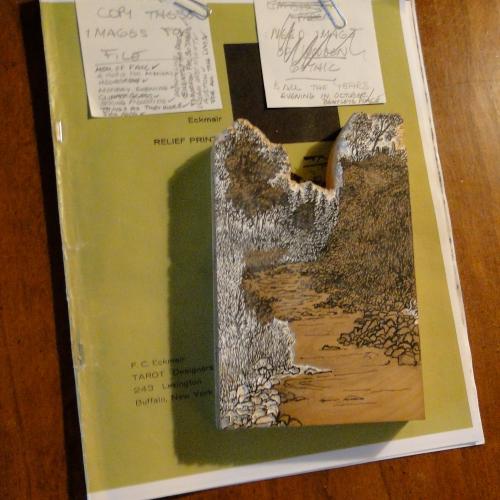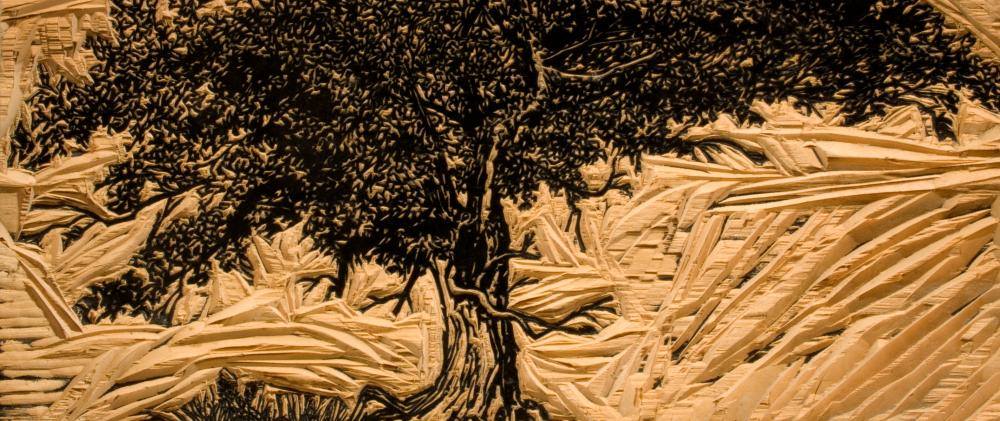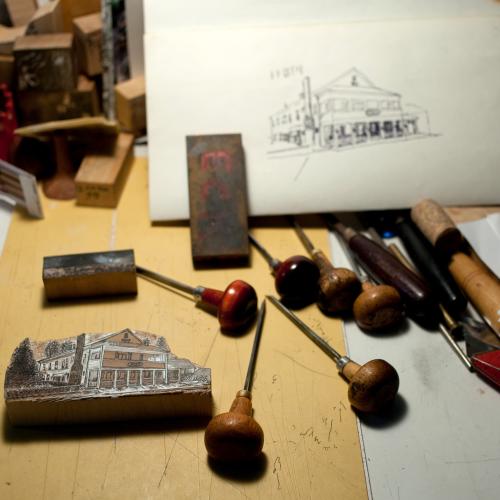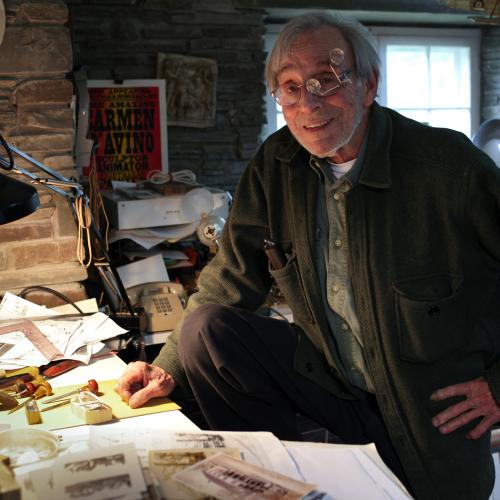

Frank C. Eckmair
Untitled (Tree) Woodblock, detail
Printmaking in 20th-Century New York
American artists of the 20th century made a conscious effort to break from European traditions by embracing American subject matter. Printmaking became a vibrant force in the art world, with much of it centered in New York. In the early 20th century, artists of the Ashcan School began their careers as professional illustrators but continued to alternate between fine and commercial art. Their prints of everyday street life captured New York City’s energy.
During the Great Depression, printmaking was an inexpensive way to produce art for the American public. The Works Progress Administration established a print program, resulting in workshops around the country that brought artists together to produce artwork for government offices and public spaces. Many of these artists were part of the Regionalist movement that recorded American farms and industries and celebrated the common laborer. They also made prints for subscription programs such as American Associated Artists, which allowed even those with modest incomes to purchase prints.
Printmaking in 1950s New York grew in stature with the rise of the New York School, a group of artists, poets, and musicians centered in the City. On Long Island, the influential Universal Limited Art Editions studio encouraged collaborations between artists and writers, provided printmaking space, and brought prints to collectors, galleries, and museums. Finally, the explosive growth of State University of New York campuses during the postwar period led to the establishment of major printmaking programs that are still operating today. Frank C. Eckmair was a key figure in the print studio at Buffalo State College for more than three decades.
The Art of the Woodcut
Although Frank C. Eckmair was experienced in all kinds of printmaking, he prefered to make woodcuts. “Wood is a poor man’s material,” he said. “Anyone can afford a piece of wood. A wooden spoon and a tube of printer’s ink is all that is necessary for the actual printing.”
A woodcut is a print made by cutting a design in a block of wood. The part to be printed is left raised while the excess wood is cut away. Ink is applied by roller or spoon to the raised surface and printed on paper.
In addition to being economical, the woodcut is one of the oldest and most expressive forms of art. Carved woodblocks were used in ancient Egypt for impressing designs into bricks and by Romans for stamping letters and symbols. The earliest woodcut prints were made in China 1,500 years ago to illustrate Buddhist texts. Around the same time the Japanese began using woodblocks to print textile patterns. A thousand years later, with the advent of mass paper production, the printing press, and moveable type, the woodcut became a common means of illustration. Although illustration processes changed as printing advanced technologically, the woodcut has prevailed for centuries as an artistic medium.





